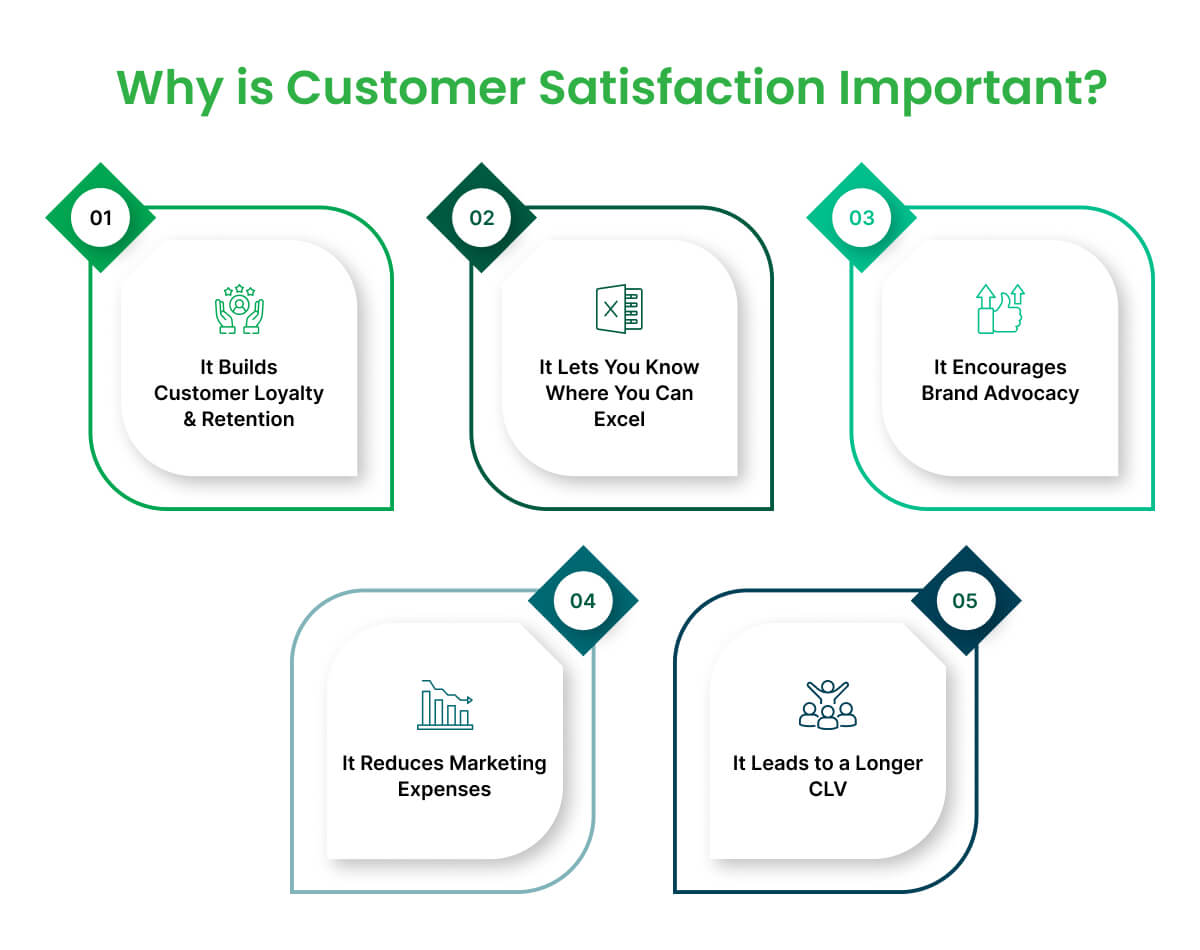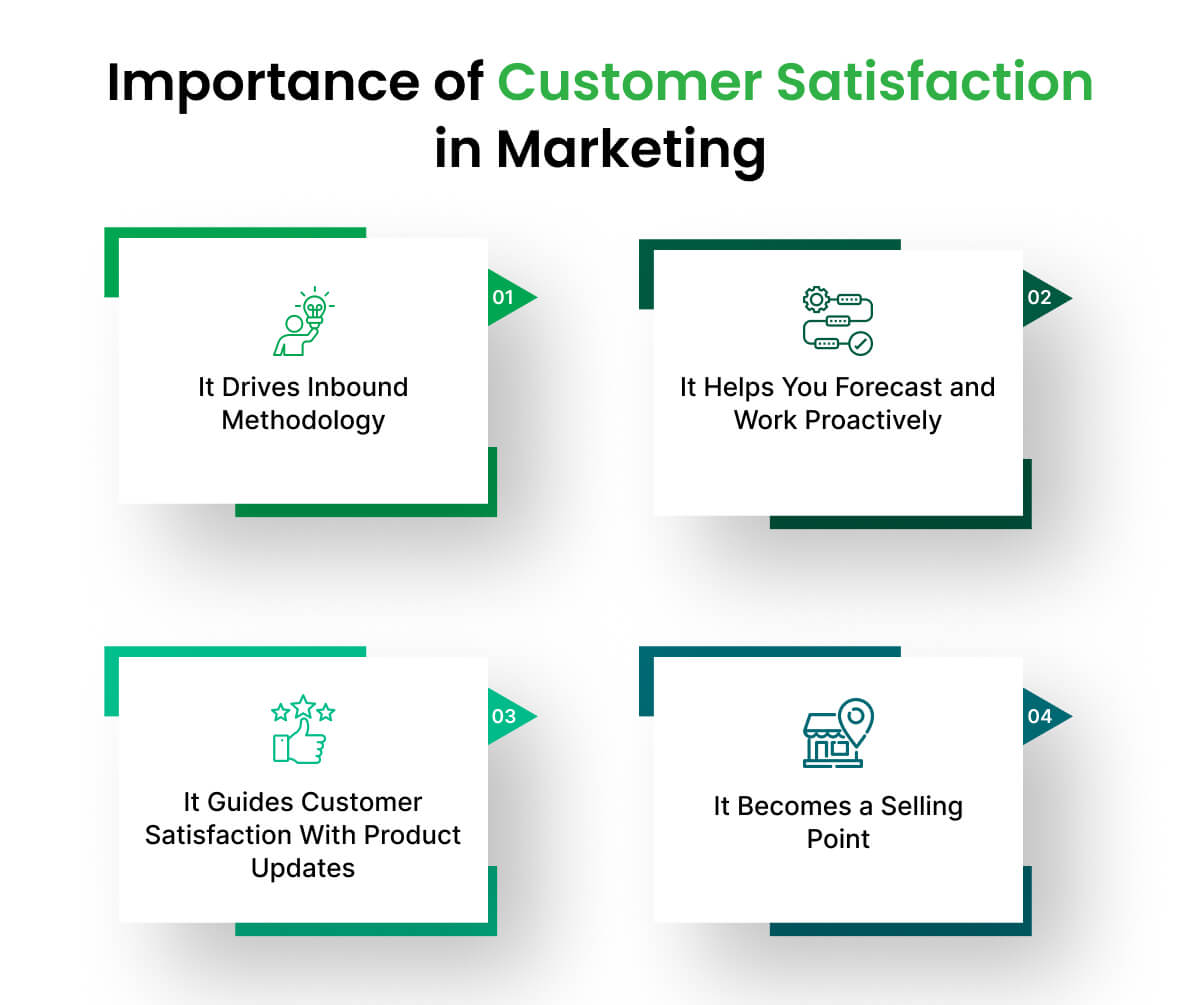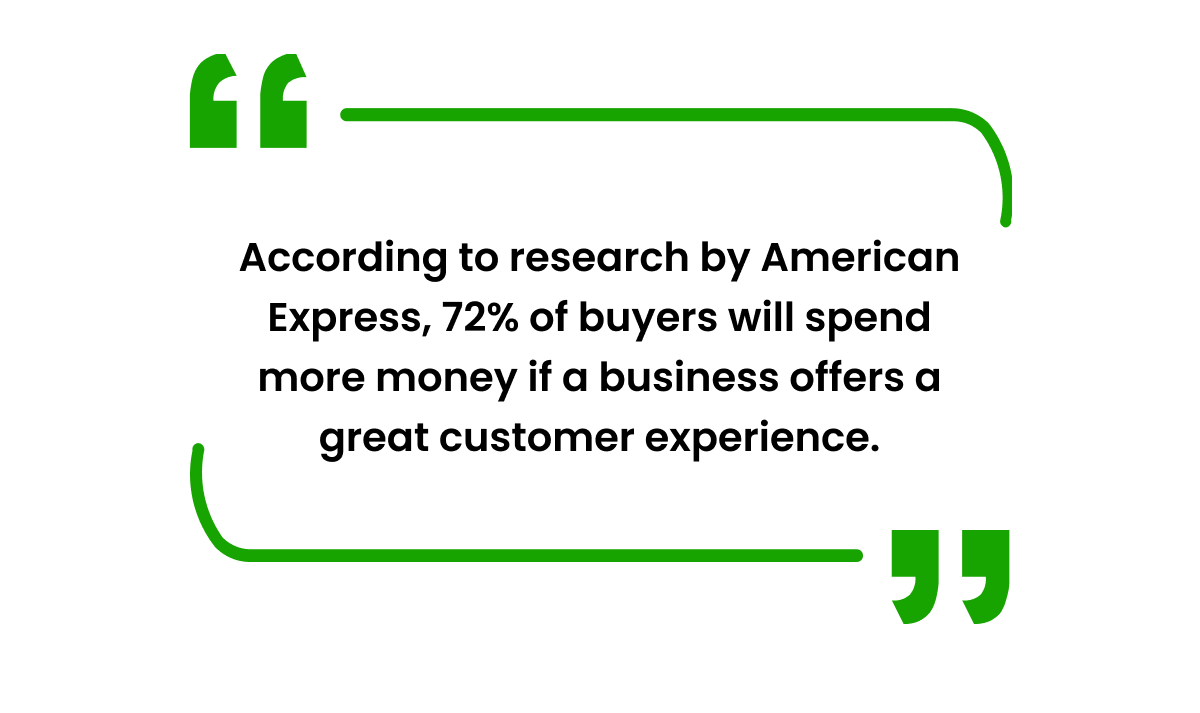 Customer Experience
Customer Experience

11 March, 2023

What if you arrive at work one day only to discover that your customer base has bolted to your competitors? If you’ve ever broken out in cold sweats thinking about your KPI and revenues going to hell… excellent. And that is what happens when businesses overlook customer satisfaction.
It goes without saying that businesses strive to increase customer lifetime value. Otherwise, clients won’t hesitate to move to a competitor with better items, prices, and customer service interactions. Honestly, you can’t dismiss the importance of customer happiness, and every organization should approach it as an essential business factor. Whether you are a mom-and-pop bakery down the street or a behemoth like Amazon, customer satisfaction becomes a mandate to sustain everlasting competition.
Contents
Customer satisfaction (CSAT) is a metric used to define the extent to which a customer is happy with a product, service, or experience related to your business. It’s also a way for your team to ensure a stream of delighted customers. High customer satisfaction indicates a booming business.
Measuring the metric can be a difficult task if you are a startup. But knowing which questions to ask and quantify can help you apprehend the nooks and crannies of your business. Usually, the customer satisfaction model takes into account multiple facets of the customer experience, like:
Running a customer-centric business necessitates a robust customer experience model, even if you have a few customers.
Let’s take Trader Joe’s as a shining example. One of the finest features of the brand is the cleverly crafted return policy. With intelligent marketing policies, the store tricks people into buying more stuff.
Trader Joe’s lets you buy any product. However, if you are dissatisfied with the item, you can return it anytime. They don’t care whether it’s opened or used.
The policy is definitely an expensive program, but think about the psychological triggers it has on the customers. Since the company allows customers to experience a product with no obligation fee, they don’t suffer from anxiety stemming from a product outside their comfort zone.
Did you know 67% of clients leave their suppliers due to the perceived effect of indifference? So it only makes sense to take risks and design customer-friendly programs. Unless you offer something superlative, you’ll be out of business in a week in today’s highly competitive business world.
Ultimately, the program ended up bringing more revenue to Trader Joe’s. Increased customer satisfaction ensures long-term clients and enhances your visibility in the cutthroat business world. Further, customer satisfaction can also save you from the dire consequences of churning customers, poor customer experiences, and negative word of mouth.

Customer satisfaction is essential because it defines whether your customer base likes what you are doing. Research illustrates high customer satisfaction leads to a strapping brand reputation and pronounced customer retention.
Conversely, a poor customer satisfaction model is essential too. They can reveal insights backed by real-time data on improving your product, services, or customer interaction within the workplace.
But there are also a few tangible benefits to customer satisfaction. Let’s explore them!
Did you know it’s five to twenty-five times more valuable to retain your existing customers than to acquire new ones? Research also reveals that a 5% increase in customer retention increases your gross profit by 25%. The catch? You can’t retain or have loyal customers unless they are satisfied.
Have you ever wondered why banks or insurance companies go the extra mile to keep you around? It’s because they know the consequences of doing otherwise. So, try to keep your clients content and thwart churning. Remember, customer satisfaction doesn’t mean top-notch customer service. Instead, the entire experience of your business, like the website, product, location, etc., is linked to the process.
Tesla is a company that focuses entirely on customer satisfaction. Besides producing spectacular cars for the road, the company guarantees effortless car services. Don’t want to drive your car to their workshop for servicing?
Just let them know. Their specialized team will happily swing by your house to fix your car. Providing outside-of-workshop services is not cheap since it requires the transportation of various tools. But Tesla is happy to take the extra step for their customers.
You can understand why your company excels by tracking and monitoring customer satisfaction reports. Growing companies prioritize customer feedback and conduct surveys to determine what makes prospects satisfied. And happy customers will continue to make repeat purchases, ultimately boosting your bottom line.
Consider this example. Your business sells software services for $10 per month. Currently, 100 customers are enjoying the service, and through surveys, you learned that 90% of them are satisfied with what you have.
However, you’re still at risk of losing ten customers, which means $100 monthly. Multiply that by 12, and it results in $1200 over a year. That’s a lot of lost money for a business.
So, we recommend repurposing the surveys again and filling the gaps with the acquired information. Famous brands have implemented the strategy to identify their shortcomings, which ultimately helped them achieve high sales figures.
Customer satisfaction is essential for brand advocacy. Whether you like it or not, customers talk about their experiences with your business.
While we hope the reviews were positive, research shows that unhappy customers will talk about their terrible customer experience to an average of 15 people. Extrapolate that by the number of existing customers, and that’s a lot of destructive advertising.
Conversely, Salesforce revealed that 72% of happy customers share their positive experiences with others, and 92% of prospects trust recommendations from known people. Improving CSAT scores means satisfied customers will share their good experiences with friends and family, leading to more business for a company.
Did you know enhanced customer satisfaction can reduce your marketing or advertising expenses? Happy and satisfied customers are your biggest boosters. Their positive feedback lends your brand credibility and lets you gain attention in a breeze. This strategy helps brands save chunks of money that they would spend on promotional campaigns to acquire new leads.
Customer lifetime value refers to the expected profit companies can make from customers for as long as they stay with the business.
If your services are dissatisfactory, customers will likely never return to your business after the initial purchase. And low customer lifetime value makes you skip potential revenue opportunities.
On the contrary, when customers are happy, they’ll likely stay in your business for a longer period, leading to a boost in profits.
Customer satisfaction is essential for improving your gist and ensuring your company delivers the most satisfactory results possible. But how does it impact other areas of your company?
Let’s find out!

So, how does customer satisfaction elevate the marketing field? Well, there are several ways, and we’ll tell you how!
Without customer satisfaction metrics, teams can’t understand the validity of their customer base. The marketing team needs data and trends to forecast team performance over the next month or quarter. The gathered data can give your marketing department the information they need to improve customer experiences and incorporate customer feedback into existing models.
Customer satisfaction does more than improve your sales—it optimizes other departments’ performance by providing practical insights. Further, businesses with excellent customer satisfaction can easily engage with prospects since they’re proven to provide a delightful customer experience. If your company wants to adopt the inbound methodology, integrate customer satisfaction into every function you perform.
Negative customer feedback acts as an alert that lets businesses know when a product or service is defective and requires immediate fixing. This is particularly beneficial for SaaS businesses that regularly update their software. By monitoring the CSAT scores, development teams can mitigate costly roadblocks that may lead to swirls in the long run.
Marketing teams benefit from customer satisfaction because it functions as a selling point during pitches or negotiations. As we know, customers are willing to pay for a delightful experience. If your customer satisfaction is superb, your marketing team should highlight that during pitching or advertising.
Additionally, customer satisfaction scores help the team understand customer expectations by analyzing the data. It helps companies comprehend which parts of the business they should emphasize. Hammering about those advantages during prospecting can help differentiate your business from your competitors.
There’s a whole lot of misinformation circulating about customer satisfaction. Most people believe it’s directly tied to the products and services. But in today’s harsh competition, customer satisfaction comes from how sales professionals interact with customers. The very best companies in the world developed this philosophy. Since we live in a customer-centric economy, here is a set of rules for businesses to follow:
If you’re not creating your customer satisfaction model following these laws, it’s easy for you to lose customers in a beat. However, if you’ve incorporated the ideologies well, you’ll gain prospects praising you to the skies, giving referrals, and buying from you as long as you have something great to offer.
So, how can you incorporate the strategy into your business model? It usually begins with in-depth research, but some tips work for all business sizes.
It comes as no surprise that understanding your customers is the first step to ensuring smooth customer satisfaction. How can you satisfy your customers if you don’t know what they want? If you don’t understand their pain points, how can you design a product that resolves their challenges?
Understanding your customer begins with analyzing customer profiles and designing an ICP accordingly. You can structure customer service models that speak to their exact needs with the obtained information. Remember, you can’t satisfy your customers unless you exceed their expectations.
Before closing the deal, there are several touch points where your prospects will interact. An excellent strategy to nail whether it’s a profitable deal on both ends is experiencing the journey. How does that work?Try signing up anonymously for the demo and see how it goes. Is it resourceful enough for your customers? Can it solve the bottlenecks? How long does it take to fix the issues after a complaint?
Once you know all of this first-hand, you can effortlessly identify which areas need improvement. This makes your operations efficient, leading to enhanced customer satisfaction.
This step is essential but often overlooked, especially if you have a massive corporate identity. However, that shouldn’t be the case since agents face the customers directly. They know what makes or breaks a customer’s journey. So, connect with the reps or agents regularly and leverage the data to fix any shortcomings you have in the process.
Apart from communication, it’s also essential to empower your employees. Let them be involved in the process and resolve the problems passionately. This ensures they are occupied with their work and curbs employee attrition.
If you want to survive in an economy that runs on the whims of customers, it’s time to structure a customer-centric culture for your company.
A customer-centric culture means every department and team works to foster a positive customer experience. When everyone does their jobs with customers in mind, they constantly work to satisfy their needs.
For instance, the customer support team can design programs like:
Treating your customers right is the pillar of all services, as it helps you show customers that you are on their side and working to help them succeed. So, treat your customers the way you’d expect from a company and raise the bar.Integrate respect, attention, and empathy during communication. Since 50% of customers would switch to a new brand after a bad experience, leading with appreciation and warmth is always a good practice to achieve high customer satisfaction scores.
Your teams are the gatekeepers of client interaction. Well-trained teams are better at handling and resolving sudden challenges. Further, a trained team has better retention records and increases customer loyalty. A recent survey of US-based customers showed that 69% of people feel customer service is imperative for brand loyalty.
The customer satisfaction model will only be successful if the company provides the reps with the necessary resources. This encompasses everything from performance feedback to the everyday aids they need on the job, like access to the internet or roadmaps for escalation protocols, etc.
Higher waiting times significantly reduce customer satisfaction scores. The company must ensure their office is well-staffed to deal with the queries. You cannot provide excuses to customers like the holiday season, being understaffed, etc. As a businessman, you should be able to anticipate situations and take remedies consequently.
You cannot provide excuses to customers like the holiday season, being understaffed, etc. As a businessman, you should be able to anticipate situations and take remedies consequently.
Providing customer support on multiple channels can enhance your customer satisfaction scores. Offering support on diverse platforms reflects brand consistency and promotes trust.
Here are some examples of forms of customer support and how you can use them:
Rewards encourage customers to keep investing in your products and services. Rewards can include discounts, invitations to try new products, and product giveaways. For instance, a customer who often makes a large purchase may receive a 10% discount on upcoming purchases. Offering discounts can promote feelings of customer satisfaction and persuade customers to buy additional products or services.
Another hack you can pull off is giving discounts for referrals. For example, you can offer lucrative discounts to customers who bring new people to your business. This can expand your customer base while retaining the old ones.
Customers will more likely invest in your product if they have adequate information about your business. This information might include how your company operates, where the raw materials come from, and what it supports.
A clear return or refund policy will encourage customers to trust your business. Additionally, offering transparent information about the pros and cons of a service can augment the depth of customer satisfaction.
When customers buy from you, they are willingly supplying their data. But are you using it wisely? Ensuring customer satisfaction also means personalizing the customer journey.
Personalizing messages with their names and tailoring them according to their journey with you can make your customers happy. Even a short message like Happy Birthday conveys that you care about the relationship.
To employ the technique, you can use a CRM to keep track of customer information and interaction history. This makes it easier for companies to customize messages and usher in a tailored conversation.
Check also: How is Customer Service Measured for Success in Business
Did you have an improvement based on the customer feedback? Follow up with the customer and let them know about it. Keeping your customers in the loop shows you care about their opinions. So, improving customer satisfaction comes down to gathering data from customer feedback and acting on it.
If you’re still wondering about the steps you can take to chase your goals, here’s what we suggest:
Leveraging the techniques on the list will help you create delightful experiences and positive perceptions of your brand, which contribute to fostering a culture of customer satisfaction.